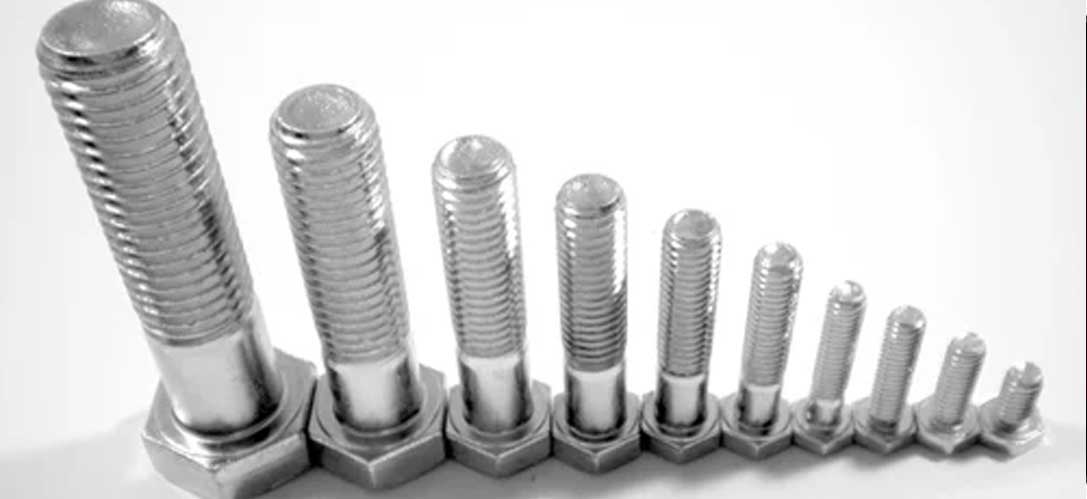
Stainless Steel 316 Bolts
SS 316 Fasteners are used to mechanically join two or more objects together, either permanently or non-permanently. There are various types of fastener and each has its own purpose. SS316 Fasteners is widely categorized as either Permanent or Non-Permanent. Permanent Fasteners are such as rivets and nails. It is single-use fasteners that are designed to permanently join two materials or parts. Non-Permanent fasteners are manufactured to provide an easy removal and re-use. 316 Stainless Steel Fasteners are such as bolts and screws are usually used in a number of industries and products as they allow for parts to be dissassmbled and re-assembled if required. Non-Permanent fasteners can be threaded. Type 316 Stainless Steel Fasteners contains an addition of molybdenum that gives it improved corrosion resistance. This is especially apparent for pitting and crevice corrosion in chloride environments. S31600 Bolt is a mechanical fastener with a threaded shaft. It is nearly related to screws which has a threaded shaft. It is usually inserted through two parts, with aligned holes. It is inserted through parts which all have unthreaded holes and a nut is then screwed onto the bolt to offer a clamping force and stop axial movement.
Stainless Steel 316 Bolts often rely on axial force causing sufficient friction at the threads to remain in place. A torque is applied to its head to generate this axial force. The force behaves between the bolt head and whatever the bolt is screwed into, whether it is a nut or the parts which is being fastened. This offers elongation of the bolt and compression of the elements containing clearance holes. On the other hand some form of locking nut or thread-locking adherent can be used to stop the bolt from loosening. The most common type of SS316 Bolt is the SS316 hex bolt. It has a hexagonally shaped head which has flat surfaces for tools to apply torque when fastening. Many other types of bolts are available for specific applications, for example: carriage bolt, J bolt, shoulder bolt, lag bolt, stud bolt, u-bolt, square head bolt, elevator bolt, toggle bolt, machine bolt, sex bolt, t-head bolt, flange bolt, hanger bolt, etc. 316 Stainless Steel Threaded Rod is usually referred to as a stud. It is a rod differing length that is threaded in a helical structure. It combines linear and rotational movement to provide strong pressure resistance. It has similar appearance like screw its threading extends around and along the rod to provide a rotational movement when in use. Its direction of the rotation is caused by a threaded rod which depends on whether the rod has a right-hand thread, left-hand thread, or both.
316 Stainless Steel Stud Bolt has a thread on full-lengths or at both ends. It has three elements if washers are not used. Its length is usually measured end to end or first to first. The length of it is measured parallel to the axis, is the distance from first thread to first thread. A4 Fasteners are commonly known as marine grade stainless fasteners due to its salt water corrosion resistance. It can be found in a number of water-based applications and it is also salt spray resistant. 316 Stainless Steel Bolts and Nuts are especially effective in acidic environments. It is effective in protecting against corrosion caused by acetic, formic, hydrochloric, sulfuric, and tartaric acids, as well as alkaline chlorides and acid sulfates. Stainless Steel 316 Self Tapping Screws is a screw that has the ability to tap threads into the material. It is useful for all types of material such as metal, wood, and brick. It cannot be drilled through metal and require a pilot hole to be pre-drilled before installation. 316 Stainless Steel Lag Bolts is one of the toughest fasteners. It is extremely a sturdy fastener which is usually used to connect heavy lumber or other heavy materials that are bearing an intense load. SS 316 Bolts and Nuts are an austenitic chromium-nickel stainless steel bolts and nuts that contains between 2% and 3% molybdenum. The molybdenum content improves resistance to pitting in chloride ion solutions, increases corrosion resistance, and strength at high temperatures.

